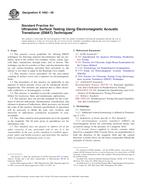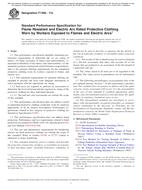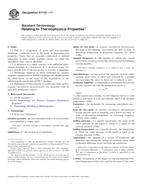1.1 This test method describes a procedure for measurement of ultrasonic attenuation coefficients for advanced structural ceramic materials. The procedure is based on a broadband buffered piezoelectric probe used in the pulse-echo contact mode and emitting either longitudinal or shear waves. The primary objective of this test method is materials characterization.
1.2 The procedure requires coupling an ultrasonic probe to the surface of a plate-like sample and the recovery of successive front surface and back surface echoes. Power spectra of the echoes are used to calculate the attenuation spectrum (attenuation coefficient as a function of ultrasonic frequency) for the sample material. The transducer bandwidth and spectral response are selected to cover a range of frequencies and corresponding wavelengths that interact with microstructural features of interest in solid test samples.
1.3 The purpose of this test method is to establish fundamental procedures for measurement of ultrasonic attenuation coefficients. These measurements should distinguish and quantify microstructural differences among solid samples and therefore help establish a reference database for comparing materials and calibrating ultrasonic attenuation measurement equipment.
1.4 This test method applies to monolithic ceramics and also polycrystalline metals. This test method may be applied to whisker reinforced ceramics, particulate toughened ceramics, and ceramic composites provided that similar constraints on sample size, shape, and finish are met as described herein for monolithic ceramics.
1.5 This test method sets forth the constraints on sample size, shape, and finish that will assure valid attenuation coefficient measurements. This test method also describes the instrumentation, methods, and data processing procedures for accomplishing the measurements.
1.6 This test method is not recommended for highly attenuating materials such as very thick, very porous, rough-surfaced monolithics or composites. This test method is not recommended for highly nonuniform, heterogeneous, cracked, defective, or otherwise flaw-ridden samples that are unrepresentative of the nature or inherent characteristics of the material under examination.
This standard does not purport to address all of the safety concerns, if any, associated with its use. It is the responsibility of the user of this standard to establish appropriate safety and health practices and determine the applicability of regulatory limitations prior to use.
Product Details
- Published:
- 08/01/2007
- Number of Pages:
- 11
- File Size:
- 1 file , 180 KB
- Redline File Size:
- 2 files , 350 KB


